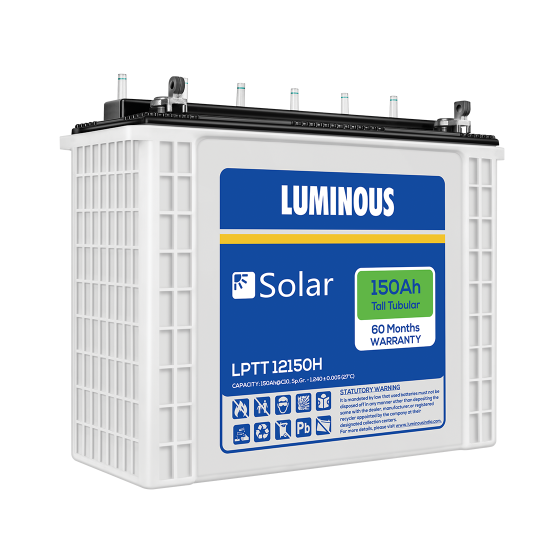If you’ve been planning to install an off-grid solar energy solution, it is an obvious thing one can ask: How many watts of solar panels do I need to charge a 150 AH battery?
Or how much time it takes for 600 watts of the solar panels to charge a 150 AH battery full?


In this article, we’ll explain the basic calculation of the solar panels’ capacity or wattage requirements to charge a battery bank.
First, let us calculate the battery watts. Inverter batteries come in 12 Volts capacity, let’s say you have a 150 AH battery bank then multiply the battery’s AH with its Volts to calculate the total battery wattage.
150 AH * 12 Volts = 1800 Watts
Battery AH * Battery Volts = Battery Watts
Second, in how many hours you want the battery bank to charge full using just solar panels. Let’s assume to charge a 150 AH battery full in just 4 hours. So divide the watts of battery by charging hours.
1800 Watts / 4 Hours = 450 Watts
Battery Watts / Charging Hours = Watts Required
So, we would require more than 450 watts of solar panels to charge a 150 AH battery around 4 hours under a clear and sunny sky.
But no inverter will charge the battery with such a high current.
A 150 AH battery rated with C10 will be charged with 15 (+1 or 2) Amps of current. Thus, for the battery’s long life, you should not charge it more than that. Even an inverter won’t do that even if you supply more than the required current, rather the inverter moves those additional energies to direct output for day load. Let’s adjust the formula a little bit:
A 180 Watts of solar panel will generate around 8–9 Amps and 2 Panels in parallel will generate more than 15 Amps, which will be enough to charge an inverter battery.
So assume we have 2 Nos * 180 watts solar panels.
1800 Watts / 360 Watts = 5 Hours (theoretical)
Battery Watts / Watts Required = Charging Hours
You just need 200+ Watts of solar panels to charge a 150 AH 12 V battery in 5+ sunny hours. This may take more than one and a half days to charge completely. So, in the end, just add 30% additional solar watts if you stick to a minimum, as there are some current losses in electricity conversion.
Smart Note: Better use MPPT (Maximum Power-Point Tracking) solar charge controller over PWM (Pulse-Width Modulation) to extract the most from solar panels. Power losses are negligible in MPPT and over 97% efficient, whereas, PWM loses around 20 to 30% of its energy.
When we are talking about a clear and sunny sky, things are not bright always.
Critical weather conditions like clouds, rains, and winter season also affect solar energy generation, we need to take such conditions into account as well. If you’re relying completely on solar power, then add more watts of the solar capacity (calculate house load and match that load by solar panels). This way you can rely on solar power in the daytime and use the battery bank power at nighttime.
Leave a Reply